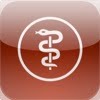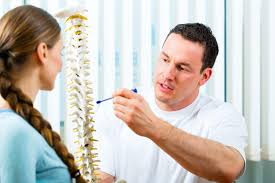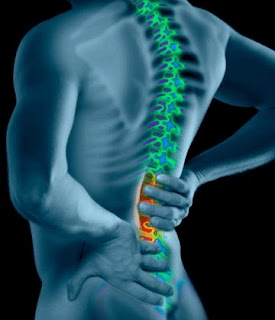A pinched nerve in the spine, also known as radiculopathy, can lead to a variety of uncomfortable symptoms, including numbness, pain, and weakness. Compression and irritation of the sciatic nerve, or sciatica refers to pain that may affect any of the five spinal nerve roots that give rise to each sciatic nerve. Both sciatic nerves travel from the low back through the buttock and down the back of the leg and foot.
Along with pain down the length of the sciatic nerve there are other symptoms of sciatica may include difficulty with movement, numbness, muscle weakness, and tingling. Symptoms are usually unilateral, meaning they occur in only one sciatic nerve at a time, although sometimes symptoms are perceived on both sides but symptoms are usually unilateral, meaning they occur in only one sciatic nerve at a time.
Radiculopathy may occur for no apparent reason or as the result of an injury. Most likely to experience radiculopathy are those individuals aged 30 to 50 years old, and the effects will be felt in the cervical and lumbar spine areas. Directly along the course of a specific spinal nerve root, radicular pain radiates into the lower extremity which includes the thigh, calf, and occasionally the foot. The most common symptom of radicular pain is sciatica, which is pain that radiates along the sciatic nerve. This discomfort is felt down the back of the thigh and calf into the foot. One of the most common forms of pain caused by compression of a spinal nerve in the low back, sciatica is often caused by compression of the lower spinal nerve roots.
Leg pain is typically much worse than the low back pain with this condition while the specific areas of the leg and/or foot that are affected depends on which nerve in the low back is affected. Radicular pain into the front of the thigh and the shin is caused by compression of higher lumbar nerve roots.
Compression of lumbar or sacral nerves, or by compression of the sciatic nerve itself is the general cause of sciatica. A bulging spinal disk, deterioration and misalignment of the vertebrae, and a herniated intervertebral disc in the spine can be the cause of this nerve compression. Degenerative disc disease is a common cause of these changes. Tears in the annulus fibrosis, the tough outer skin of the intervertebral discs,involves breakdown of the vertebrae and may allow the soft inner nucleus pulposus (pulp) to protrude and push against spinal nerves. This can cause severe pain and numbness and this nerve compression is a most common cause of sciatica.
Spinal stenosis, or progressive narrowing of the spinal canal causing spinal nerve or spinal cord compression, is another cause of sciatica. Bone spurs, herniated discs, which decrease available space for the spinal cord, inflammation and spondylolisthesis can all be the cause of this narrowing. This condition also pinches and irritates lumbar and sacral spinal nerves, and this in turn affects sciatic nerves. Persistent pain in the low back and lower extremities, which may include sciatica, often results from spinal stenosis. Other symptoms of the disorder are decreased sensation in the lower extremities, decreased physical activity and difficulty walking. Spinal stenosis patients often present with bilateral sciatica, which means that both sciatic nerves are affected.
Doctors may diagnose radiculopathy using MRI and CT scans as well as radiologic imaging with X-ray in addition to a physical exam and a review of symptoms. Some physicians may employ electrical impulse testing called electromyography or EMG which can test nerve function.
In the beginning the treatment of sciatica focuses on lowering the inflammation that is causing the patient's symptoms. Initial treatments might include taking muscle relaxers and non-steroidal anti-inflammatory drugs (NSAIDs) as well as physical resting. To treat more stubborn cases of inflammation your doctor may prescribe oral steroids, which have more severe side effects but are proven effective. Radiculopathy usually is treatable without surgery. Doctors may recommend certain medications, including oral corticosteroids or injectable steroids depending on the severity of the radiculopathy. These may include narcotic pain medications.
A course of nonsurgical treatment such as selective spinal injections, physical therapy, medications, a soft cervical collar and ice and heat applications should be conducted for six to eight weeks. Decompressive surgery, such as discectomy/microdiscectomy, and/or laminectomy , may be recommended if nonsurgical treatment does not alleviate the pain. For 85% to 90% of patients this type of surgery typically provides relief of radicular pain/leg pain.
Physical Medicine & Rehabilitation
Medicine. Matt Ota is a Board Certified Physician Assistant with
extensive knowledge of musculoskeletal disorders and injuries.
(located at OFMC Plaza)
2135 SW 19th Avenue Road
Wellness Direct: 352-368-1340
OFMC Main: 352-237-4133
Fax: 352-873-4581
E-mail: info@ocalafmc.com














































